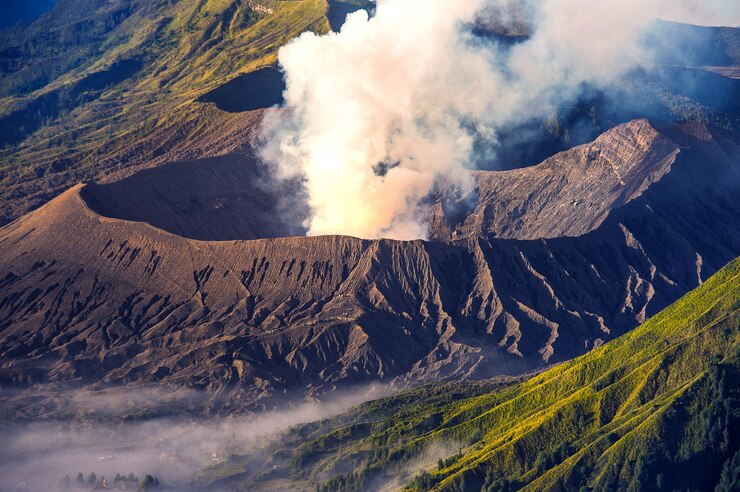
Bali, often referred to as the “Island of the Gods,” is famous for its stunning beaches, lush landscapes, and vibrant culture. However, the island also boasts a unique and powerful natural wonder – its volcanoes. Bali is home to several active and dormant volcanoes, which not only add to the island’s scenic beauty but also offer exciting opportunities for exploration and adventure. In this ultimate guide, we will take you through the remarkable world of Bali’s volcanoes, providing you with essential information, safety tips, and a glimpse into the breathtaking experiences that await you.
Bali’s Volcanic Landscape
Bali’s volcanic landscape is a result of its location along the Pacific Ring of Fire, a tectonic hotshot that produces frequent volcanic eruptions and earthquakes. The island is home to several volcanoes, with the most notable ones being Mount Aging, Mount Batur, and Mount Bratan.
Mount Agung: Mount Agung is the highest volcano on Bali, standing at 3,031 meters (9,944 feet) above sea level.
It is an active volcano and is considered the holiest by the Balinese people, featuring the Pure Bespeak temple complex on its slopes.
Hiking to the summit of Mount Agung is a challenging but rewarding experience, offering breathtaking panoramic views of the island.
Mount Batur: Mount Batur is another popular volcano in Bali, known for its relatively easy trek.
The trek to Mount Batu’s summit is a favorite activity for tourists, especially those looking to witness a stunning sunrise over the surrounding landscapes.
Mount Brattain: While not as renowned for trekking, Mount Bra tan is famous for its serene Lake Brattain and the iconic Pura Ulun Dani Brattain temple located by the lakeside.
Exploring Bali’s Volcanoes
Trekking: Bali’s volcanoes offer excellent trekking opportunities, suitable for both experienced hikers and beginners.
Hiking tours are available for Mount Agung and Mount Batur, usually starting in the early hours of the morning to catch the sunrise.
Visit the Temples: The volcanoes in Bali are often intertwined with the island’s religious culture. Don’t miss the chance to visit the temples located on their slopes, such as Pura Besakih on Mount Agung and Pura Ulun Danu Bratan on Mount Bratan.
Photography: The stunning landscapes, lush greenery, and panoramic vistas make Bali’s volcanoes a paradise for photographers. Capture the beauty of the island from a unique vantage point.
Safety Tips
While exploring Bali’s volcanoes is an exciting adventure, it’s crucial to prioritize safety:
Choose a Reputable Guide: Always hire a licensed and experienced guide for your volcano trek. They will ensure your safety and provide valuable insights into the local culture and environment.
Dress Appropriately: Wear appropriate clothing and footwear for your trek. The weather can vary, so pack accordingly.
Check the Weather: Be mindful of weather conditions. Avoid trekking during the rainy season, as it can be dangerous.
Stay Hydrated and Bring Snacks: Staying hydrated and having some energy-boosting snacks is essential for a successful trek.
Respect Local Customs: Be respectful of the local culture and religious sites on the volcanoes. Follow the dress code and guidelines provided by your guide.
Conclusion
Exploring Bali’s volcanoes is a captivating way to connect with the island’s natural beauty and cultural heritage. Whether you seek adventure, stunning vistas, or a spiritual journey, Bali’s volcanoes have it all. Remember to prioritize safety, respect local customs, and make the most of this extraordinary experience. Your journey to the “Island of the Gods” will undoubtedly be enriched by a visit to these majestic volcanoes.



